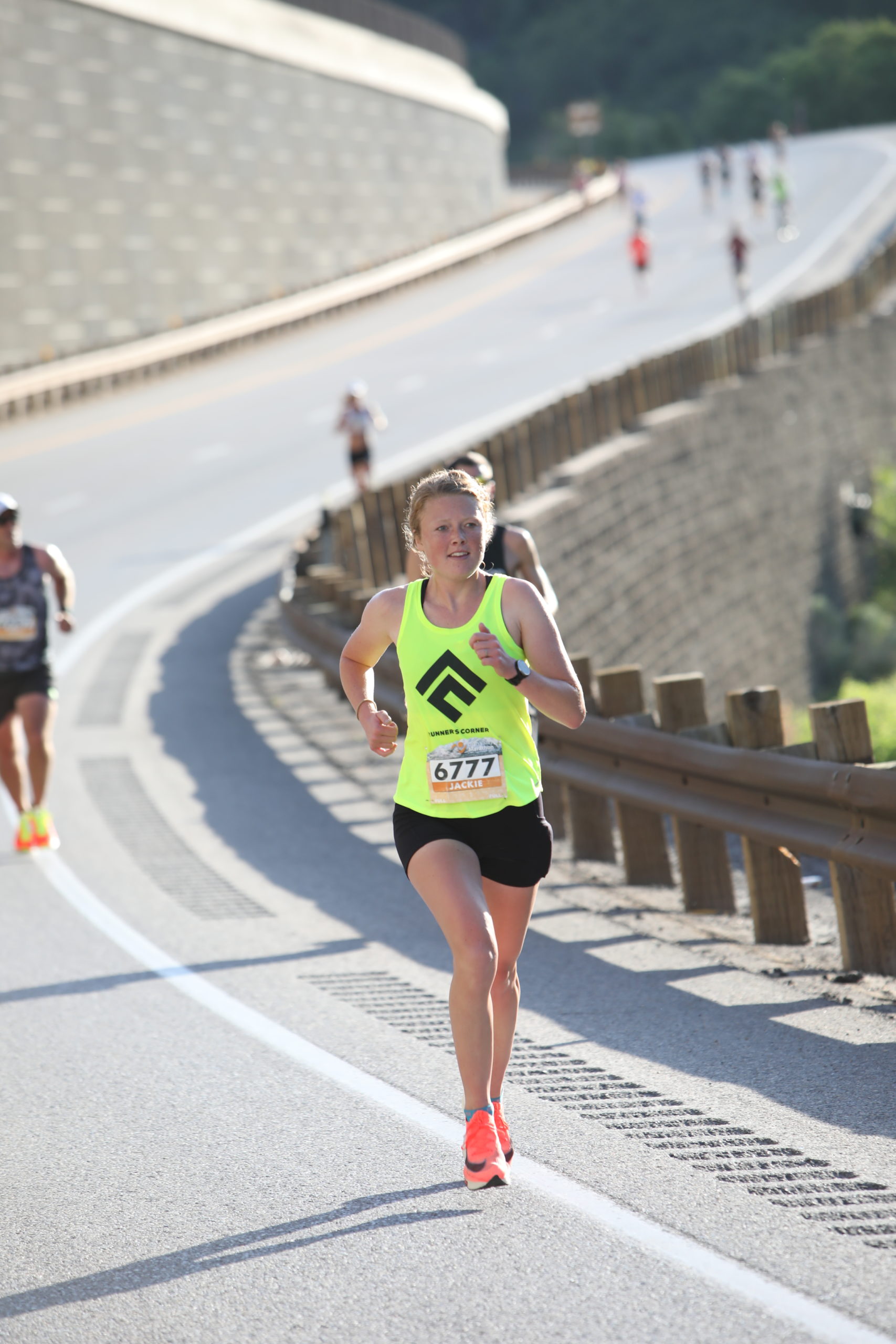Am I Eating Enough? How To Know If You Are

As a registered dietitian, one of the most common concerns I receive from my clients is if they are meeting their energy needs to support their training – whether they are eating enough, or eating too much. With so many mixed messages of how to manage your nutrition, it’s not surprising that this is a main concern, particularly among athletes with higher energy needs than the general population.
Am I Eating Enough?
“Eating enough” is the number one thing an athlete can do to improve their performance with regards to nutrition.
- Are you looking to use nutrition as a way to reduce injury? Make sure you are eating enough.
- Trying to use nutrition to improve energy levels during your sport? Be sure to eat enough.
- Working on building muscle? You must be eating enough to do so.

This one principle is the foundation for all other aspects of sports nutrition an athlete can focus on to improve their performance. If you aren’t eating enough, every other nutrition change will be less effective. For example, an athlete who (intentionally or unintentionally) under-fuels throughout the work week will not feel 100% on their 3 hour bike ride come Saturday, even if they have a good breakfast before and fuel throughout the ride. They will get by, but most likely not feel as optimal as they could have if they were not climbing out of a deficit.
Another example could be the athlete who prioritizes supplementation for their performance. They may take a host of multivitamins, sleep aids, and green drinks to achieve optimal nutrition status, but still develop a stress fracture as a result of not eating enough. The body will not focus on less important biological processes such as menstrual function, bone development, or muscle growth when it is only given the energy and fuel to keep you alive from day to day.
So, how do you know if you are eating enough?
In general, if you can answer “yes” to each of these questions, you are likely meeting your energy needs.
Do You,
- Feel strong & capable throughout your entire workout?
- Have energy to carry out your responsibilities throughout the day, after your workout?
- Eat regular meals and snacks?
- Fuel before, during (if longer than 60-80 min) and after your workout?
- Show signs of being healthy (no injuries, recurring illnesses, etc.)?
- Have blood biomarker levels in optimal ranges?
- Remind yourself to eat, even when you aren’t particularly hungry but know your body needs the fuel (i.e. right after a workout, before a long shift at work, etc.)?
- Respond to the hunger cues you do have?
- Eat until you are comfortably full?
- Go to sleep feeling satisfied?
- If biologically female, have regular menstrual cycles (not manipulated by any form of hormonal birth control)?
If you answered “no” to one or more of these questions, there’s a good chance we can help you meet your needs better with some of the options below. There are a variety of ways to manage your energy intake, and depending on where you are at in your nutrition journey, will determine what method you should use to start.
Energy Equations & Tracking Calories/Macros
Energy is measured in calories. There are a variety of energy equations used to determine your daily calorie (or energy) needs. My favorite is the Harris-Benedict equation because it takes into account an athlete’s height, weight, age, gender, and activity level. It’s about as personalized as it gets without using fancy & expensive equipment that can more accurately determine your metabolic rate. Determining your energy needs by using an equation can be a helpful tool to help you objectively see whether or not you are close to meeting those needs on a day to day basis.
With this method, I do not recommend meticulously counting your calories or sticking to 1 calorie number each day. Rather, take your typical calorie intake and compare it to your ideal. What gaps do you notice? At which meals could you improve on in general to help you meet those needs?
Remember that our energy needs fluctuate based on our training volume, time of the year, a biological woman’s menstrual cycle, and varying activity levels throughout the day → things your equation will either not factor in, or be accurately adjusted. I prefer to use this as a tool to help you better understand where you are at & what you can do to improve in the initial stages of addressing the issue of eating enough.
Activity Tracking Watches or Apps
Most watches or apps that track your activity data also include features that track your caloric burn. Please be aware that the accuracy of this data is likely negligible. Additionally, know that for the most part, this data only tracks your “active” calories & not your total daily needs. For most athletes, the majority of the fuel you need each day does not come from your exercise. Rather, it comes from your body’s inherent need for fuel to keep you alive. This inherent need for fuel is called your BMR, or basal metabolic rate and cannot be ignored when calculating your energy needs.
Adding your “active burn” calories from your watch to your BMR is a method, albeit full of potential mishaps, that you could use to give you an idea of your energy needs and how they change from day to day.
Biological Hunger & Fullness Cues
Hunger and fullness cues are the most accurate & least invasive way of tracking your energy needs as they change from day to day. It takes time, practice, and an overall sense of trust in your body to be able to fully rely on hunger and fullness cues. If you find yourself struggling to trust yourself in recognizing and responding to your hunger cues, or feel as if you are never truly hungry, you may need to focus on an intermediary method of managing your energy needs before fully relying on hunger & fullness. For a short time, and with the guidance of a registered dietitian, consider a more intentional approach to meeting your needs (i.e. meal plan, calorie tracking, etc.).
If you do have hunger cues, start by responding to them without hesitation. As you start to listen to them, you will feel them more accurately. Hunger cues can be felt in a variety of ways – headaches, dizziness, fatigue, always thinking about what you’ll eat at your next meal or snack, grumbly stomach, etc. Learn to pay attention to the way your body lets you know it needs fuel. Trust in your body’s accuracy. As you learn to trust your hunger, you will find that you will feel an equal level of fullness and satisfaction in appropriate levels as you respond to your hunger cues. Our bodies are incredible regulators.
Practical Hunger Cues
In addition to using biological hunger & fullness cues, athletes should use at least a few practical hunger cues in order to assure they meet their energy needs each day. These are more logical cues that help prepare an athlete for demands of daily training in the absence of a biological cue.
This may look like eating lunch at 11:00 am instead of your usual 12:30 because you have meetings lasting from 11:30-4:00. Even though you are not exceptionally hungry at 11:00, you know you will be ravenously hungry if you wait to eat lunch at 4:00 and will not be adequately prepared for your evening training session if you procrastinate your fueling schedule.
For many athletes, it is helpful to create an eating schedule that outlines how many eating opportunities you will likely need on any given day to meet your energy needs. This schedule is not meant to be rigid, but will help you stay on task with eating the right number of meals and snacks you personally need. When used in tandem with biological hunger & fullness cues, an athlete will most likely be meeting their needs.
Wrapping it all up
Meeting your energy needs is the most important nutrition goal you can make as an athlete. This helps you feel energized, stay injury free, and find a groove of consistent training and improvement year after year. Ultimately, learning to trust in your hunger and fullness cues is the gold standard for managing your needs accurately with minimal stress. Using logic & reason to fill in the gaps through practical hunger will assure you meet your needs consistently as they change from day to day.
References
1) Holtzman B, Ackerman KE. Recommendations and Nutritional Considerations for Female Athletes: Health and Performance. Sports Med. 2021 Sep;51(Suppl 1):43-57. doi: 10.1007/s40279-021-01508-8. Epub 2021 Sep 13. PMID: 34515972; PMCID: PMC8566643.
2) Tribole E, Resch E. Intuitive Eating: A revolutionary program that works. Published in New York, New York. 5th Edition. 2012.
3) Lane AR, Hackney AC, Smith-Ryan AE, Kucera K, Register-Mihalik JK, Ondrak K. Energy Availability and RED-S Risk Factors in Competitive, Non-elite Male Endurance Athletes. Transl Med Exerc Prescr. 2021;1(1):25-32. Epub 2021 Jun 7. PMID: 34296227; PMCID: PMC8294781.
4) Logue DM, Madigan SM, Melin A, Delahunt E, Heinen M, Donnell SM, Corish CA. Low Energy Availability in Athletes 2020: An Updated Narrative Review of Prevalence, Risk, Within-Day Energy Balance, Knowledge, and Impact on Sports Performance. Nutrients. 2020 Mar 20;12(3):835. doi: 10.3390/nu12030835. PMID: 32245088; PMCID: PMC7146210.
5) Elliott-Sale KJ, Tenforde AS, Parziale AL, Holtzman B, Ackerman KE. Endocrine Effects of Relative Energy Deficiency in Sport. Int J Sport Nutr Exerc Metab. 2018 Jul 1;28(4):335-349. doi: 10.1123/ijsnem.2018-0127. Epub 2018 Jul 14. PMID: 30008240.
6) Rosenbloom, C. Sports Nutrition: A Practice Manual for Professionals. 5th Edition. Academy of Nutrition and Dietetics. 2012.
7) Harris JA, Benedict FG. A Biometric Study of Basal Metabolism in Man. Publication no. 279. Washington DC: Carnegie Institution of Washington; 1919.
8) de Bruin WE, Ward AL, Taylor RW, Jospe MR. ‘Am I really hungry?’ A qualitative exploration of patients’ experience, adherence and behaviour change during hunger training: a pilot study. BMJ Open. 2019;9(12):e032248. Published 2019 Dec 31. doi:10.1136/bmjopen-2019-032248
9) Howe SM, Hand TM, Manore MM. Exercise-trained men and women: role of exercise and diet on appetite and energy intake. Nutrients. 2014;6(11):4935-4960. Published 2014 Nov 10. doi:10.3390/nu6114935
Advertisement

Jackie Hendrickson RD, MPH is a registered dietitian with a Masters Degree in public health nutrition from Utah State University. Jackie is the owner of Enduura Nutrition and loves coaching her athletes to their athletic potential through sustainable training & nutrition principles. She is an avid road & trail marathoner with a background in collegiate track, cross country, and competitive swimming. Jackie and her husband, Adam, were teammates in college and continue to pursue their running goals together. They live in beautiful Ogden, Utah with their 2 year old son, Lincoln.









